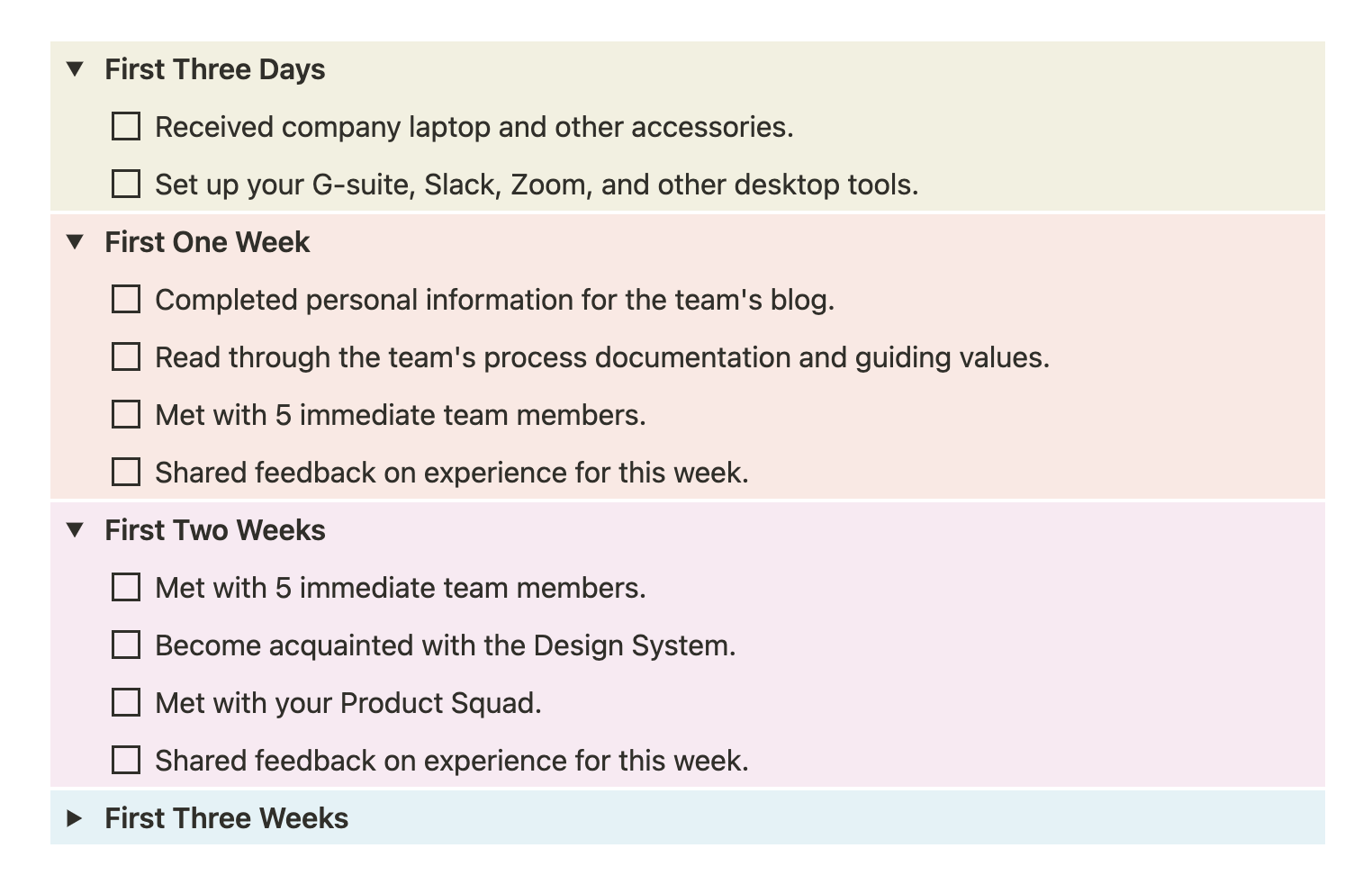Employee onboarding at its core is all about getting a new team member acquainted with the company and team's established processes, systems, and tools. It also includes learning about the new team member, what works for them, and potential contributions to the team.
An effective onboarding for new team members transcends vibes and having a similar approach to workflow. It has to be a deliberately documented process that seeks to boost the employee retention rate, reduce the time taken for new team members to settle in, and carve out a niche on the team.
It has to be a deliberately documented process that seeks to boost the employee retention rate
For most organizations and teams, the global pandemic that started last year changed the onboarding trajectory in several ways. The onboarding and everything else related to the orientation of new employees is now virtual which means, new hires might not get to experience some of the following:
That first drive to the office on the day of resumption and that building anticipation if this next step is the right step.
The first introductory meeting with the team they will be working with the most.
Exploring the office space and learning of inside jokes or previous activities that might have occurred in those spaces.
Those set of introductions to random members of the organization who are not necessarily on one's immediate team.
Work tools or merch box unboxing and setting up your assigned workspace in the office while getting familiar with your seat neighbors.
Due to how organic scenarios like those listed above usually happen in workplaces for new team members, remote teams have to think outside the box to provide experiences similar to these for their new members.
Video calls, online forms documentation, and company information can be overwhelming when thrown at new team members all at once. Even more tiring is when they do not fully understand why all that information is needed at once, so gamifying the onboarding and orientation process would benefit both parties.
Checklist & Documentation
A checklist with milestones makes a practical orientation. Knowing the total duration allocated for the onboarding makes it easier to space out the list of to-dos and their timelines. These timelines should contain some buffer time and follow the natural order of discovery, such as work tools need to be set up first before exploring Figma project files, etc. This makes it easier for new members to ease into the department's routines and workflows. It also details everything they should know.

Feedback Loop
Including a feedback loop at strategic milestones make it easier for new team members to share feedback and communicate their experiences while going through orientation. This feedback plays a huge role in informing what can be improved, updated, or no longer serves the onboarding purpose. Most importantly, it lends a listening ear to the new team members, further emphasizing that onboarding is a 2-way street.
New Experiences
Individual contributions and roles played within teams make an active culture. The team learns from the new team member by being open-minded to new experiences, approaches, and ways of getting work done. With more and more teams working from home, this brings new team cultures, practices, task execution concepts, tool shortcuts, and so much more.
Transferred Excitement
Transferred excitement is essential to the level of dedication and ownership that comes right after, and this often happens the moment a new team member goes from seeing the team as “this team” to “my team.” The timeline for transferred excitement varies from team to team. Still, it can be fast-forwarded along in the onboarding process by including checkpoints where the new team member gets to make meaningful contributions to team-wide activities, take ownership of non-work-related projects, or share whatever they are excited about with the team.
In conclusion, employee onboarding done right means putting in double the effort it took to hire new team members to ensure they settle in comfortably and quickly. It also means getting the "new guy" to a point where they see themselves as part of the team in a truly wholesome perspective.

